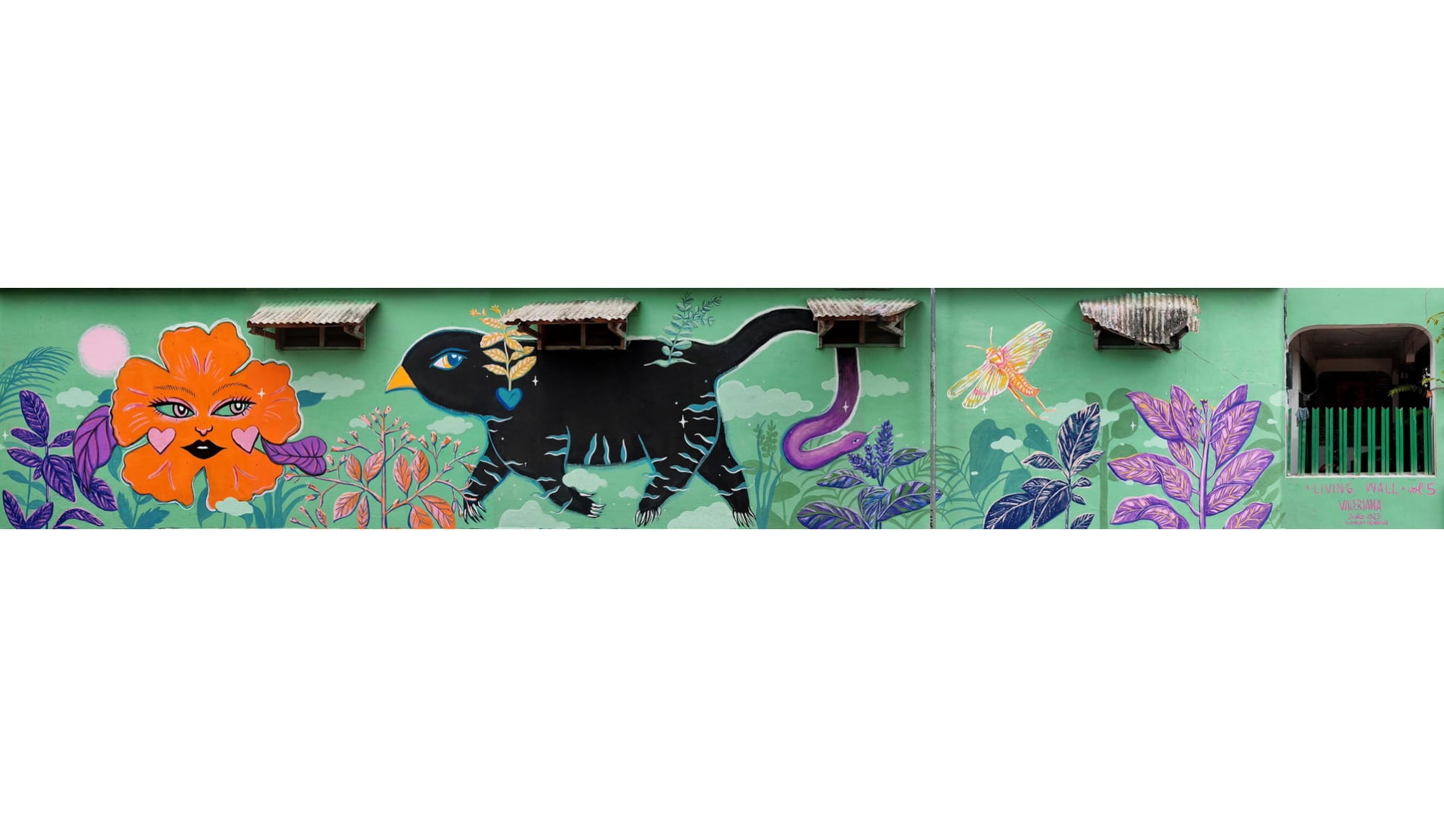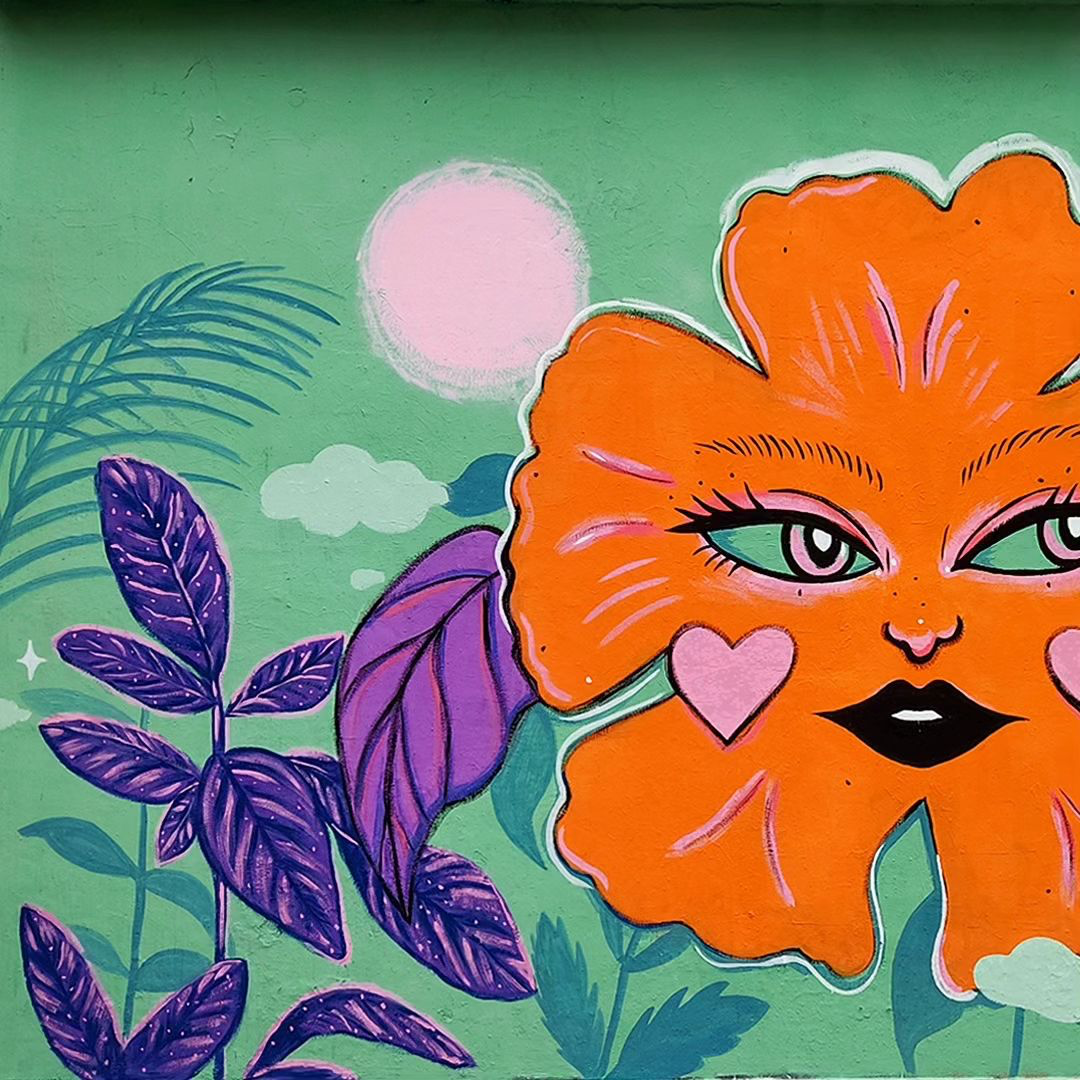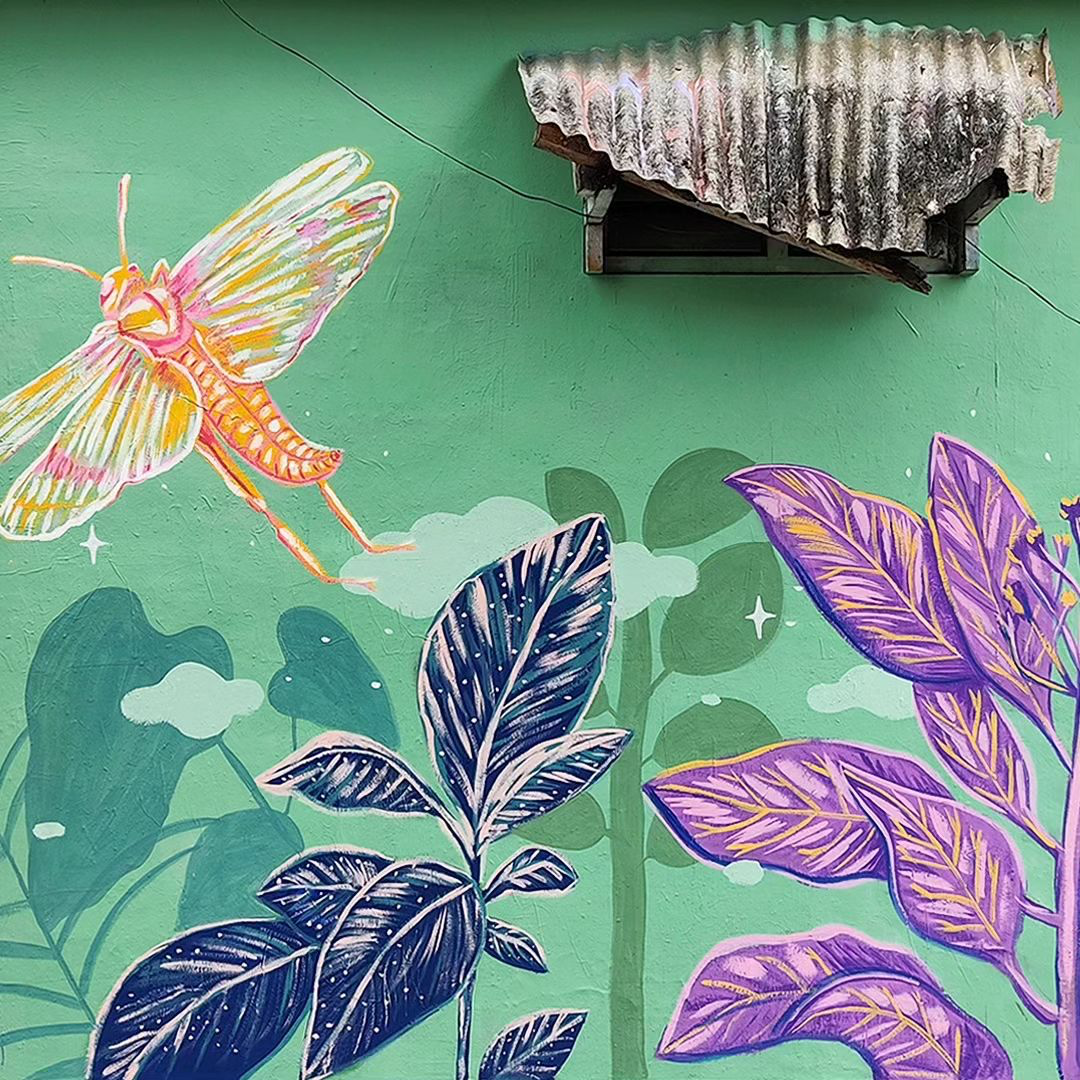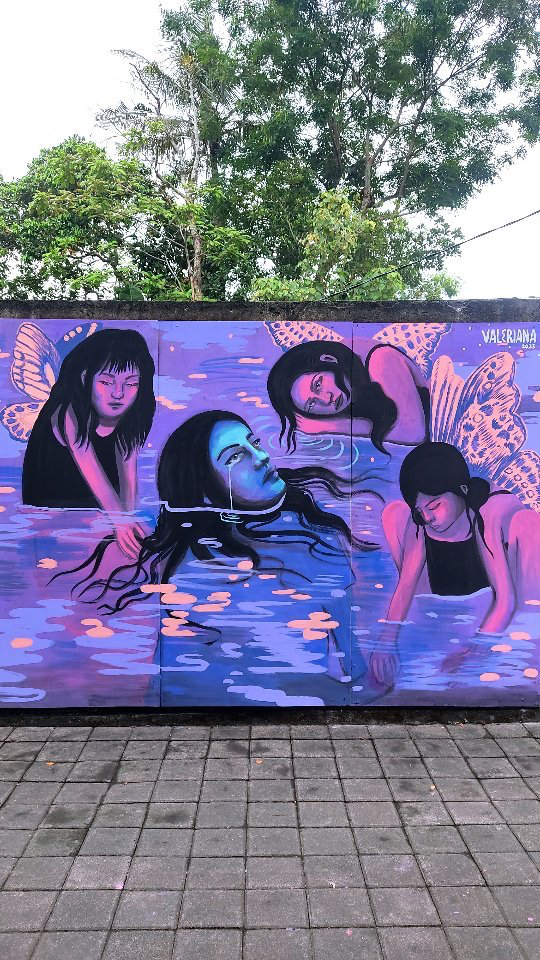Valeriana is a feminist muralist, designer and illustrator from Bogotá, Colombia. Her studies of Batik, the Indonesian wax fabric painting art, led her to travel frequently between the two countries. This acculturation has allowed her to create a series of feminist murals that depict shared experiences between women in the two nations. Her murals chart an intersectional feminist experience that is close to nature and sees similarities between women and Mother Earth. Her murals call for the liberation of both women and the planet from the constraints of the patriarchy. Valeriana’s murals are aligned with the United Nations Sustainable Development Goals of Gender Equality, Reduced Inequalities, and Life on Land.

For Valeriana, one of her most recent pieces, Living Wall Vol. 5: Abuelas Plantas, which is a 16 metres wide living wall at the Kebun Buku (Book Garden) bookshop at Minggiran, Yogyakarta, encapsulates her oeuvre and the connection she has with both Colombia and Indonesia. It took her two years to create the piece, which synthesized her experiences in her ancestral hometown at Riosucio Caldas, Colombia, with her experiences in Indonesia. In both countries, Valeriana felt a connection between women and nature. In both places, women are tasked with and feel the need to nurture the land. They also pass down knowledge about sacred plants that can heal and sustain humanity from generation to generation.

What Valeriana is acknowledging is essentially a contemporary form of ecofeminism. Along with renewed vigour for environmental consciousness, this branch of feminism was popularized in the 1970s. Ecofeminism examines how both women and Mother Nature suffer at the hands of the patriarchy. They are both exploited while expected to care for the masses and always expected to give without receiving much in return. Yet, both Mother Nature and women hold the key to humanity’s longevity. Humankind cannot sustain future generations without women and without Mother Nature, there will be no planet for humanity to live on, and there will be no future.

Valeriana’s recent pieces are also dominated by the colours teal and purple. Taking into account the fact that she has been a vocal advocate for sexual violence awareness campaigns, it is probable that the colour teal is an homage to the official colour of sexual assault awareness and prevention. The colour was chosen as it symbolizes trust, devotion and healing, all qualities necessary to help survivors and bystanders navigate the issue. Meanwhile, the colour purple is the official colour for sexual violence and domestic abuse awareness and prevention. It was chosen since it symbolized dignity and admiration, a way to empower survivors of sexual violence in an otherwise judgmental society.

Valeriana’s murals are potent reminders of the interconnected struggles and strengths of women and nature in Colombia and Indonesia. Her fusion of the two cultures allows her to highlight their ecofeminist perspectives, as seen in how both women and plants are recurring images in all of her pieces.
Find out more about feminist murals by Valeriana and their other initiatives by checking their Instagram on @___valeriana.
